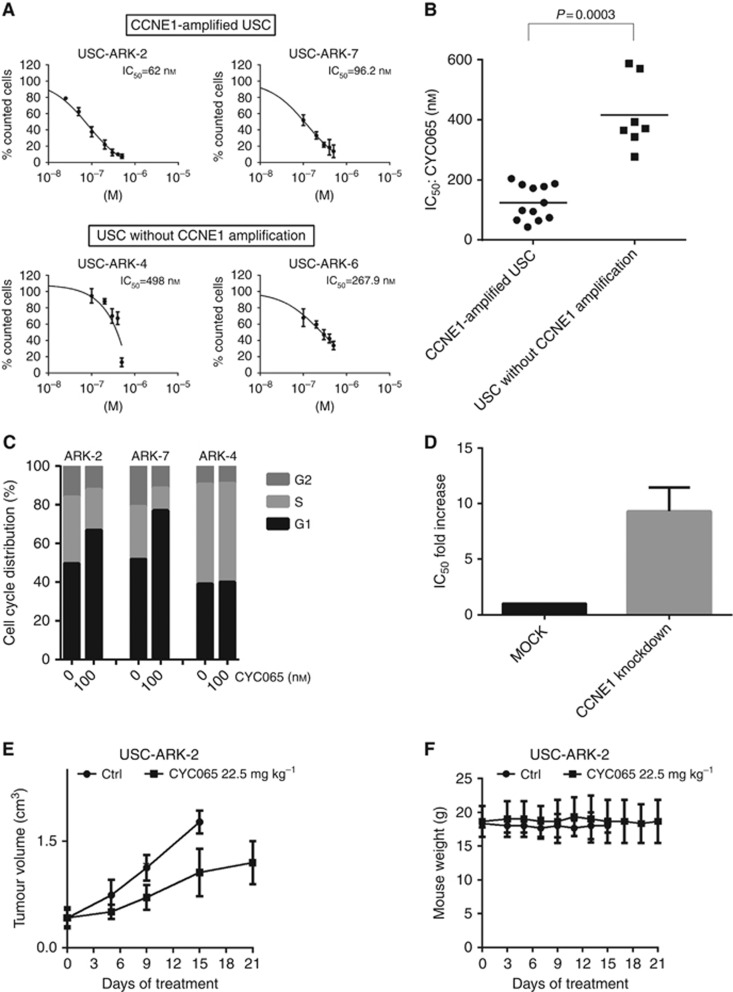Figure 2.
Sensitivity of selected USC primary cell lines to CYC065. (A) Representative dose–response curves of two CCNE1-amplified primary USC cell lines (upper panel) and two primary USC cell lines without CCNE1 amplification (lower panel) following treatment with scalar doses of CYC065. (B) Scatter plot showing half-maximal inhibitory concentration (IC50) for CCNE1-amplified USC cell lines compared with USC cell lines without CCNE1 amplification. Cyclin-E1-amplified USC cell lines were significantly more sensitive to CYC065 in vitro compared with those without CCNE1 amplification (IC50: mean±s.d.=124.1±57.8 nM in the CCNE1-overexpressing USC cell lines and 415±117.5 nM in CCNE1 low expressors, respectively; P=0.0003). (C) Cell-cycle analysis following treatment of USC cell lines with 100 nM of CYC065. Incubation of cells with CYC065 caused an arrest in the G1 phase of the cell-cycle specifically in CCNE1-amplified USC cell lines (ARK-2 and ARK-7). (D) Cyclin-E1 knockdown resulted in a 9.29-fold increase in the IC50 compared with the control (Ctrl; cells transfected with MOCK) after treatment with scalar doses of CYC065 (P=0.021). (E) Daily treatment of USC-ARK-2-derived xenografts with 22.5 mg kg−1 of CYC065 significantly inhibited tumour growth compared with vehicle-treated mice (P=0.012 starting at day 9 of the treatment). No weight loss was reported during the treatment period (F).

